A capsule wardrobe is a streamlined collection of versatile, high-quality pieces that can be mixed and matched to create a variety of outfits for any occasion. One of the most crucial aspects of building an effective capsule wardrobe is mastering color coordination. By thoughtfully selecting and pairing colors, you can simplify your outfit choices, enhance your personal style, and ensure that every piece in your wardrobe complements the others seamlessly. This guide explores the principles of color coordination within a capsule wardrobe, offering practical tips and strategies to help you create cohesive and stylish ensembles effortlessly.
Introduction
In the realm of fashion, color plays a pivotal role in defining and enhancing your overall look. Effective color coordination can transform a simple outfit into a statement, while poor color choices can detract from even the most carefully selected pieces. When building a capsule wardrobe, understanding how to coordinate colors is essential to maximize versatility and maintain a harmonious collection. By focusing on a cohesive color palette, you can ensure that every item in your wardrobe works seamlessly together, reducing decision fatigue and making dressing a more enjoyable experience.
About the Author and My Trend Boutique
Understanding Color Coordination
The Basics of Color Theory
Color theory is the foundation of effective color coordination. It involves understanding how colors interact, complement, and contrast with each other. The primary aspects of color theory include:
- Color Wheel: A visual representation of colors arranged according to their chromatic relationship. It helps in identifying complementary, analogous, and triadic color schemes.
- Color Harmony: The aesthetically pleasing arrangement of colors. Harmonious color combinations are balanced and create a visually appealing outfit.
- Contrast and Complement: Using contrasting colors can make certain elements stand out, while complementary colors enhance each other’s vibrancy.
Key Color Principles for a Capsule Wardrobe
- Neutral Base: Incorporate a foundation of neutral colors such as black, white, gray, navy, and beige. These colors are versatile and can be easily paired with a variety of other shades.
- Accent Colors: Select a few accent colors that reflect your personal style and add interest to your outfits. These can include bold or muted tones depending on your preference.
- Monochromatic Schemes: Dressing in different shades of the same color creates a sophisticated and cohesive look.
- Complementary Colors: Pairing colors opposite each other on the color wheel (e.g., blue and orange) creates a striking and balanced ensemble.
- Analogous Colors: Using colors next to each other on the color wheel (e.g., blue, blue-green, and green) offers a harmonious and unified appearance.
Building a Color-Coordinated Capsule Wardrobe
Step 1: Define Your Color Palette
Start by selecting a primary color palette that aligns with your personal style and preferences. A well-defined palette typically includes:
- Base Colors: Neutral shades that form the foundation of your wardrobe.
- Secondary Colors: Additional neutrals or muted tones that complement the base colors.
- Accent Colors: Bold or vibrant hues that add personality and variety to your outfits.
Step 2: Select Versatile Pieces
Choose clothing items in your defined color palette that can be easily mixed and matched. Focus on timeless and versatile pieces such as:
- Tops: Basic tees, blouses, and sweaters in base and secondary colors.
- Bottoms: Jeans, trousers, and skirts in neutral tones.
- Outerwear: Jackets, blazers, and coats that complement your base colors.
- Dresses: Simple silhouettes in versatile colors that can be accessorized for different occasions.
- Accessories: Scarves, belts, and jewelry that incorporate your accent colors.
Step 3: Mix and Match
Create multiple outfit combinations by mixing and matching pieces within your color palette. Here are some strategies:
- Layering: Combine different textures and shades of the same color for depth.
- Contrasting Colors: Use complementary or contrasting colors to highlight specific elements of your outfit.
- Monochrome Looks: Dress in a single color family for a streamlined and elegant appearance.
- Pop of Color: Add a splash of an accent color through accessories to elevate a neutral outfit.
Step 4: Maintain Cohesion
Ensure that all pieces in your capsule wardrobe align with your color palette and style. Regularly assess your wardrobe to remove items that no longer fit or complement your defined colors. This helps maintain a cohesive and functional collection that remains relevant to your personal style.
Practical Tips for Effective Color Coordination
1. Start with Neutrals
Begin by building a foundation of neutral-colored items that can be paired with almost anything. Neutrals offer flexibility and make it easier to incorporate accent colors without clashing.
2. Limit Your Color Palette
Avoid overwhelming your wardrobe with too many colors. A limited palette ensures that all pieces work well together, making it easier to create various outfits without conflicts.
3. Consider Your Skin Tone
Choose colors that complement your skin tone to enhance your natural complexion. Warm tones, cool tones, or neutral tones should guide your selection of both base and accent colors.
4. Invest in Key Accessories
Accessories like scarves, belts, and jewelry in your accent colors can transform basic outfits and add visual interest without requiring a large investment.
5. Experiment with Patterns
Incorporate patterns that align with your color palette. Stripes, checks, and florals in your chosen colors can add texture and dimension to your outfits while maintaining cohesion.
6. Use Color Blocking
Color blocking involves pairing solid blocks of different colors together. This technique can create bold and dynamic looks while adhering to your color coordination principles.
7. Layer Strategically
Layering allows you to play with different colors and textures. Use layers to introduce new colors gradually and create depth in your outfits.
Example Color Palettes for a Capsule Wardrobe
1. Classic Neutrals
- Base Colors: Black, white, gray
- Accent Colors: Navy, beige
2. Earth Tones
- Base Colors: Brown, olive, tan
- Accent Colors: Mustard, rust
3. Soft Pastels
- Base Colors: Light gray, blush pink, ivory
- Accent Colors: Lavender, mint green
4. Bold and Vibrant
- Base Colors: Black, white
- Accent Colors: Red, cobalt blue, emerald green
Tips for Maintaining a Capsule Wardrobe
1. Regularly Assess Your Wardrobe
Periodically review your clothing items to ensure they still align with your style and needs. Remove pieces that are worn out or no longer fit your aesthetic.
2. Prioritize Quality
Invest in high-quality garments that offer durability and timeless style. Quality pieces may cost more initially but save money in the long run.
3. Organize Your Closet
Keep your wardrobe organized by category and color. This makes it easier to see all your options and facilitates mixing and matching.
4. Limit Seasonal Additions
Add only a few seasonal items each year to keep your capsule wardrobe current without overwhelming it with new pieces.
5. Care for Your Clothes Properly
Follow care instructions to extend the lifespan of your garments. Proper maintenance ensures that each piece remains in good condition and retains its appearance.
6. Stick to Your Color Palette
Adhere to your defined color palette when purchasing new items to maintain cohesion and ensure that all pieces can be easily integrated into existing outfits.
7. Be Mindful of Trends
Incorporate trendy pieces sparingly and choose those that can be styled in multiple ways without clashing with your foundational items.
8. Utilize Accessories
Use accessories like scarves, belts, and jewelry to add variety and interest to your outfits without needing to expand your clothing collection significantly.
9. Experiment with Styles
Don’t be afraid to try different styles and combinations within your color palette. This keeps your wardrobe feeling fresh and prevents it from becoming monotonous.
10. Embrace Versatility
Choose pieces that can transition seamlessly from day to night and from casual to formal settings, enhancing the overall functionality of your wardrobe.
Hair and Makeup Ideas to Complement a Minimalist Wardrobe
1. Hairstyles
- Sleek Updos: Elegant buns or chignons keep your hair neat and let your outfits take center stage.
- Loose Waves: Soft waves add a romantic touch and balance structured looks.
- Braided Styles: Incorporate braids to add texture and interest, especially with simple outfits.
- Sleek Ponytails: High or low ponytails provide a polished look that complements various outfits.
- Minimalist Accessories: Use hair clips or headbands to secure your hairstyle and add a subtle detail.
2. Makeup
- Bold Lips: A vibrant lip color can add a pop of color to your minimalist outfits.
- Defined Eyes: Enhance your eyes with eyeliner, mascara, and neutral eyeshadows to draw attention to your face.
- Natural Glow: Emphasize your natural beauty with a dewy complexion and subtle highlights.
- Statement Blush: Add a rosy blush to bring warmth to your cheeks and complement your outfit’s color palette.
- Minimalist Look: Keep your makeup simple to let your clothing and accessories shine as the focal point.
Picture Gallery
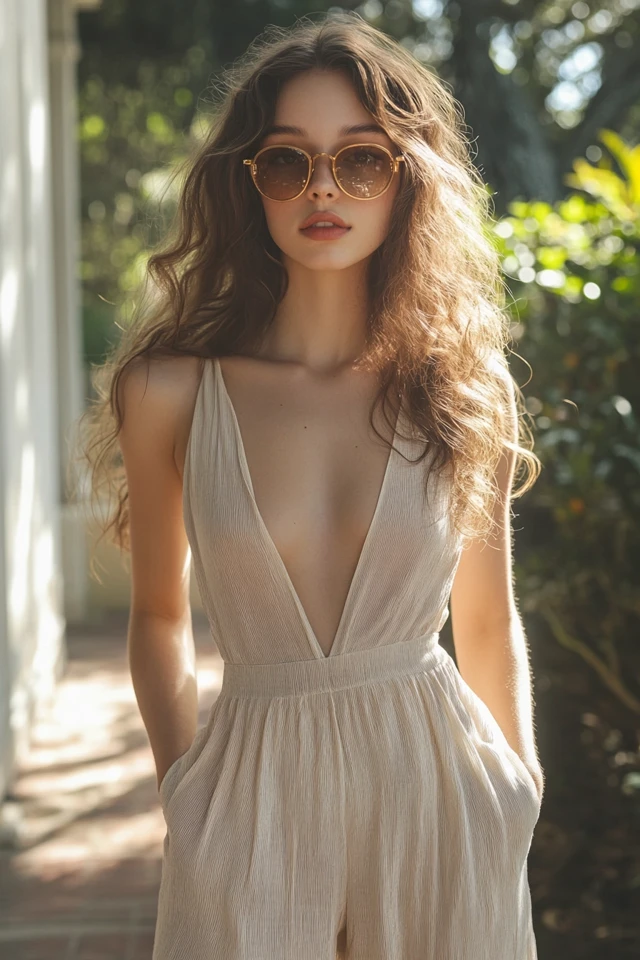




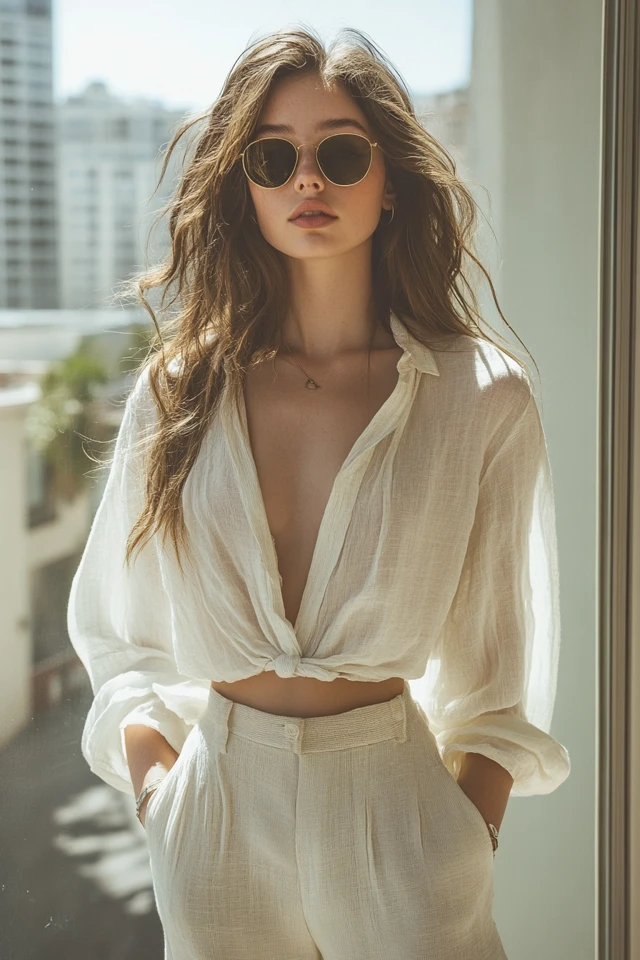
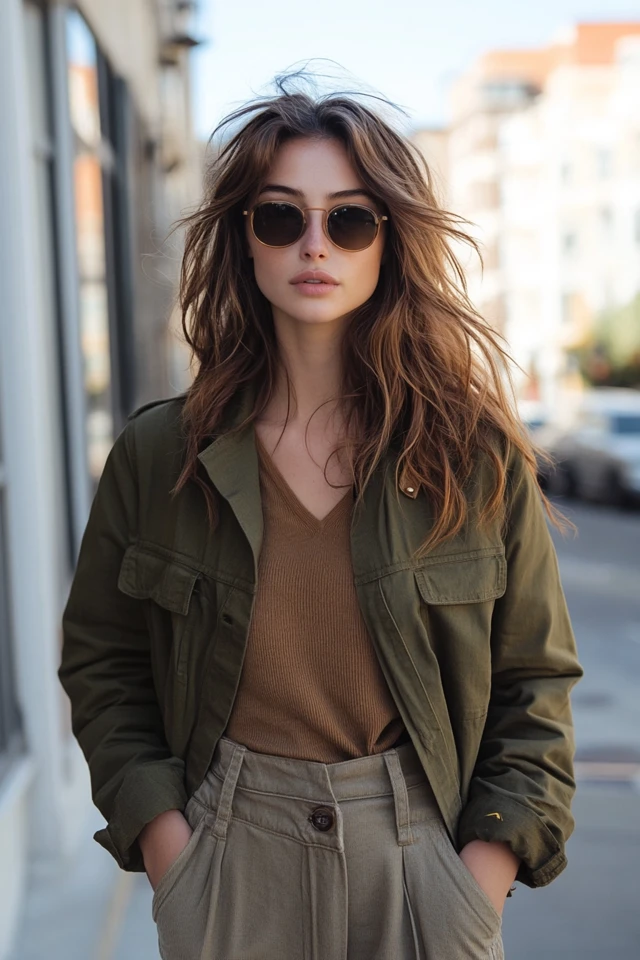
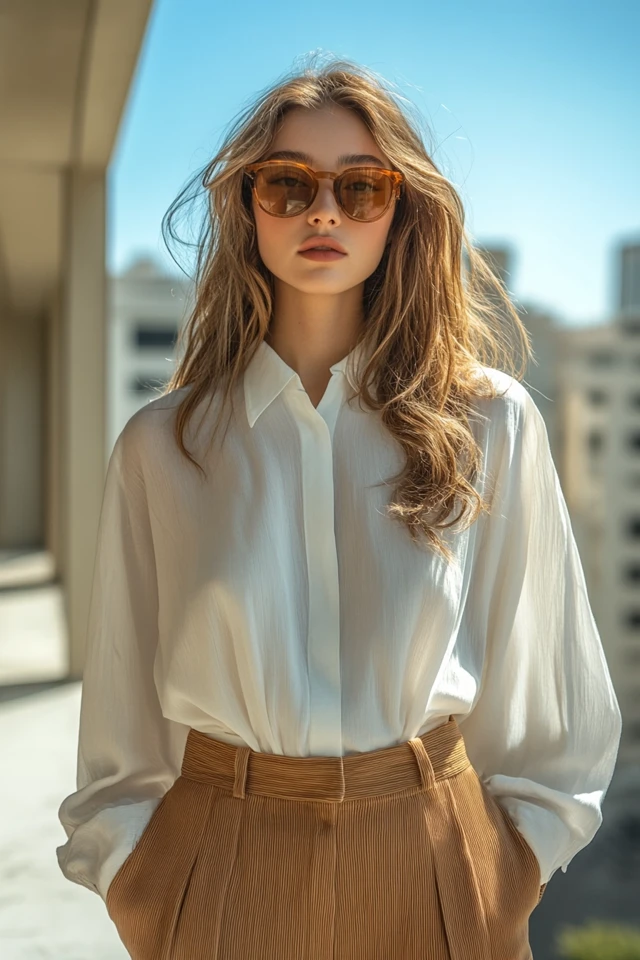
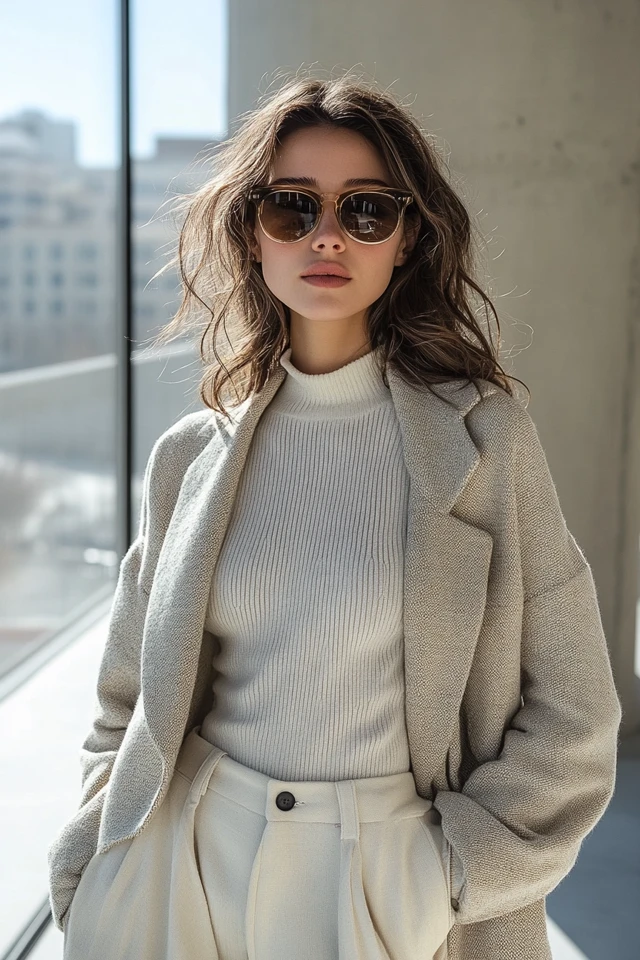

Conclusion
Color coordination is a fundamental aspect of building a successful capsule wardrobe. By carefully selecting and pairing colors, you can create a cohesive and versatile collection that simplifies your outfit choices and enhances your personal style. Embracing a well-defined color palette ensures that each piece in your wardrobe complements the others, making it easier to create a wide range of stylish and appropriate ensembles for any occasion.
A color-coordinated capsule wardrobe not only streamlines your dressing routine but also promotes sustainability by encouraging thoughtful and intentional fashion choices. By focusing on versatility, quality, and timeless style, you can build a wardrobe that is both functional and fashionable, providing endless possibilities with a limited number of pieces.
Remember, the key to effective color coordination lies in understanding your personal color preferences, considering your skin tone, and maintaining a balanced palette that reflects your unique style. With the principles and tips outlined in this guide, you are well-equipped to create a harmonious and stylish capsule wardrobe that simplifies your everyday wear and elevates your overall appearance.
Happy styling, and may your color-coordinated capsule wardrobe bring simplicity, elegance, and endless possibilities to your daily outfits!
5 FAQs
1. How do I choose the right color palette for my capsule wardrobe?
- Answer: Start by selecting neutral base colors that form the foundation of your wardrobe, such as black, white, gray, navy, and beige. Then, choose a few accent colors that reflect your personal style and complement your base colors. Consider your skin tone when selecting accent colors to ensure they enhance your natural complexion. Tools like the color wheel can help you identify harmonious color combinations.
2. Can I include bright colors in a minimalist capsule wardrobe?
- Answer: Yes, you can include bright colors in a minimalist capsule wardrobe by using them as accent colors. Incorporate bright hues through accessories like scarves, belts, jewelry, or statement pieces. This allows you to add pops of color without overwhelming your overall palette, maintaining the simplicity and cohesion of a minimalist wardrobe.
3. How many colors should I include in my capsule wardrobe?
- Answer: A balanced capsule wardrobe typically includes a primary palette of 3-5 neutral colors and a secondary palette of 2-3 accent colors. This range provides enough variety to create diverse outfits while maintaining cohesion. Adjust the number of colors based on your personal style and the versatility you desire in your wardrobe.
4. How can I make my outfits more interesting within a minimalist color palette?
- Answer: Add interest by incorporating different textures, patterns, and layers within your chosen color palette. Mix materials like denim, wool, silk, and leather to create depth in your outfits. Use accessories such as scarves, belts, and jewelry to introduce subtle patterns or unique details that enhance the overall look without disrupting the minimalist aesthetic.
5. What if I struggle with matching colors in my wardrobe?
- Answer: If you find color coordination challenging, start by sticking to a simple and limited color palette. Use a color wheel to identify complementary and analogous colors that work well together. Experiment with monochromatic outfits and gradually introduce accent colors through accessories. Additionally, seek inspiration from fashion magazines, blogs, or style icons to see how different colors can be paired effectively.


